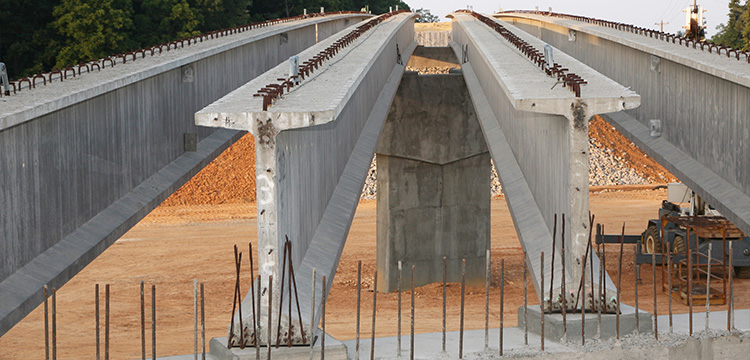TMT Bars in Bridge Constructions: Spanning Distances with Confidence
The construction of bridges is a testament to human ingenuity, engineering prowess, and the enduring need for connectivity in our world. Steel, notably TMT (Thermo-Mechanically Treated) bars, is a critical component in bridge building. These modest yet crucial components are utilized in long-distance bridge construction projects, demonstrating human inventiveness and engineering expertise.
The significance of TMT bars becomes even more pronounced in India, where rapid infrastructure development is underway. Initiatives such as the Bharatmala Pariyojana and the Sagarmala project emphasize the government’s commitment to building and renovating bridges for future generations, emphasizing the enduring need for connectivity in our world. The Bureau of Indian Standards (BIS) has established standards for TMT bars in India to ensure quality and safety in construction. Manufacturers who adhere to these norms not only meet the highest industry standards but also stand out as pillars of reliability and excellence in the production of TMT bars.
Bridging Vast Distances with TMT Bars
TMT bars play a pivotal role in reinforcing concrete structures, particularly bridges. Known for their exceptional strength, flexibility, and resistance to corrosion, they serve as reliable safeguards against the various challenges that vast infrastructures, such as bridges, may face. One of the major challenges in bridge construction is maintaining structural integrity over long distances. TMT bars play a critical role in overcoming this challenge and assuring the longevity of the structure.
The following factors underscore the paramount importance of TMT bars in bridge construction:
High Strength: TMT bars are engineered to withstand substantial loads and forces. Their high tensile strength allows for greater load-bearing capacity without excessive sagging or deformation. This strength is crucial for supporting heavy traffic and dynamic loads over time, which essentially means that longer spans can be achieved with fewer support points and reduced material usage.
Ductility: TMT bars exhibit excellent ductility and bendability properties, which allow them to deform without breaking under extreme loads or during seismic events. This property is vital for bridges, especially in regions prone to earthquakes, as it helps dissipate energy and prevent catastrophic failure. Engineers can thus design bridges, with complex shapes and curves without sacrificing strength or stability.
Corrosion Resistance: TMT bars have superior corrosion resistance due to their unique manufacturing process. This makes them highly suitable for bridge construction projects where exposure to moisture or harsh environmental conditions is inevitable, ensuring the longevity of the bridge by preventing rust and deterioration.
Enhanced Bonding: TMT bars have a ribbed surface that enhances their bonding with concrete. This strong bond between steel and concrete is crucial for distributing loads effectively and maintaining the structural integrity of the bridge.
Reduced Maintenance: The durability of TMT bars translates to reduced maintenance costs for bridges. Bridges that use TMT bars require less frequent repairs and replacements, ensuring that they remain safe and functional for decades.
In the world of bridge construction, TMT bars are crucial elements that are indispensable in empowering engineers and builders to design and construct infrastructure that can span vast distances with confidence. The strength, ductility, corrosion resistance, and bonding properties of TMT bars make them vital for ensuring the safety, durability, and longevity of bridges worldwide. As advancements in bridge engineering continue to evolve, TMT bars will remain a cornerstone in connecting people and places while shaping a promising future for generations to come.

